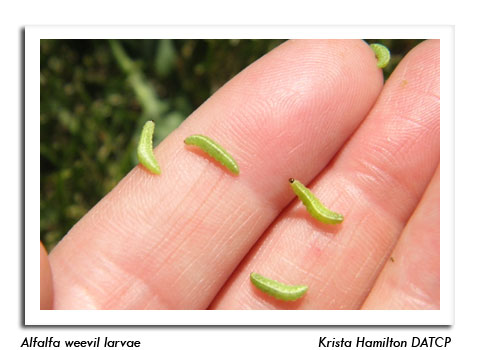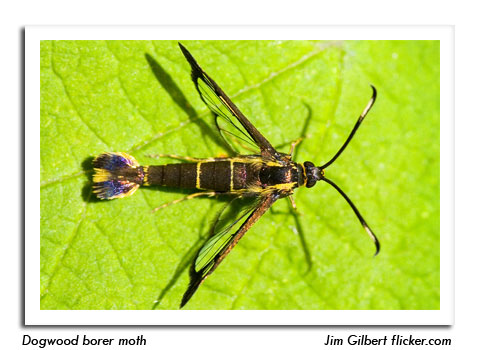
 |
|
|
Looking Ahead
Volume 59 Number 3 Date 05/15/2014 BLACK CUTWORM - Another major flight of moths arrived from May 8-14. High individual trap counts for the week were 32 moths near Platteville in Grant County and 31 at Leeds in Columbia County, with a total of 353 moths captured in 34 traps. Based on the black cutworm degree day model, 171 degree day units (base 50°F), or about 14 days, remain before larvae in southwestern Wisconsin reach the corn-cutting fourth-instar stage. This event has been tentatively forecast to begin by May 29, but could be delayed if cool weather persists this month. ALFALFA WEEVIL - Larvae are expected to emerge in advanced alfalfa fields in the week ahead. Regular scouting is advised beginning at 300 degree days (sine base 48°F), or by May 19 in the southern counties and May 27 in the central counties, where temperatures and corresponding heat unit accumulations have been considerably lower this spring. POTATO LEAFHOPPER - Migrants were collected in low numbers on May 14 from six alfalfa fields, two in Jefferson County and four in Dodge County. Their appearance suggests the first distinct migration event of 2014 has occurred. EUROPEAN CORN BORER - Pupation of overwintered larvae has started in the south-central and southwestern areas of Wisconsin and the first spring moths could emerge by May 25 near Janesville and June 3 near Hancock. Black light traps should be installed several days in advance of the flight. WOOD BORERS - Apple growers who suspect borer infestation in their orchards are reminded to set pheromone traps now for three borer species: the American plum borer, the dogwood borer and the lesser peach tree borer. The traps will indicate which species is present, seasonal flight activity, and when treatments should be applied for optimal effectiveness. -- Krista Hamilton, DATCP Entomologist 




|
|
|